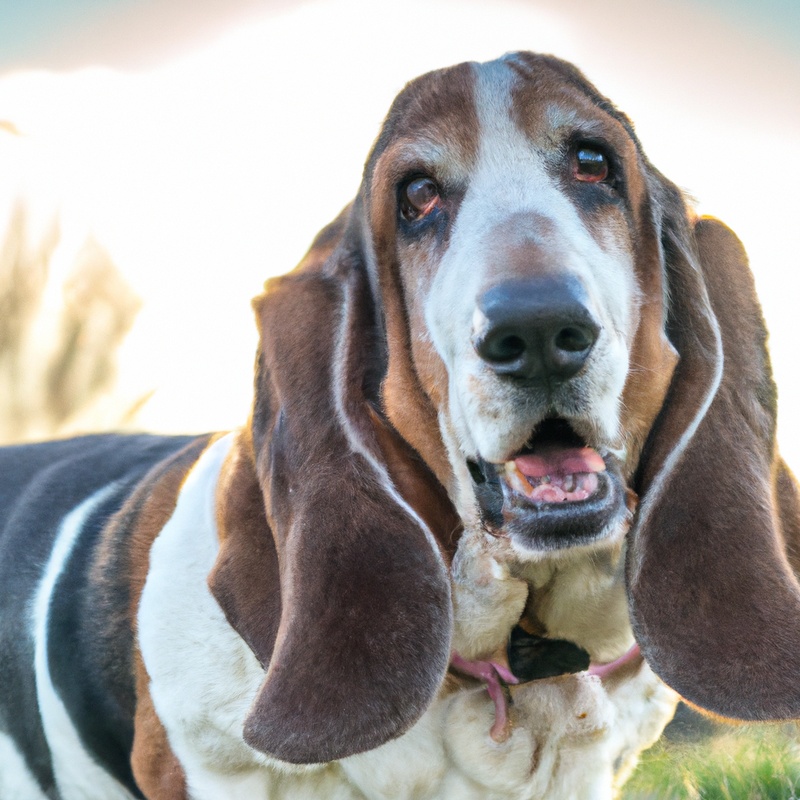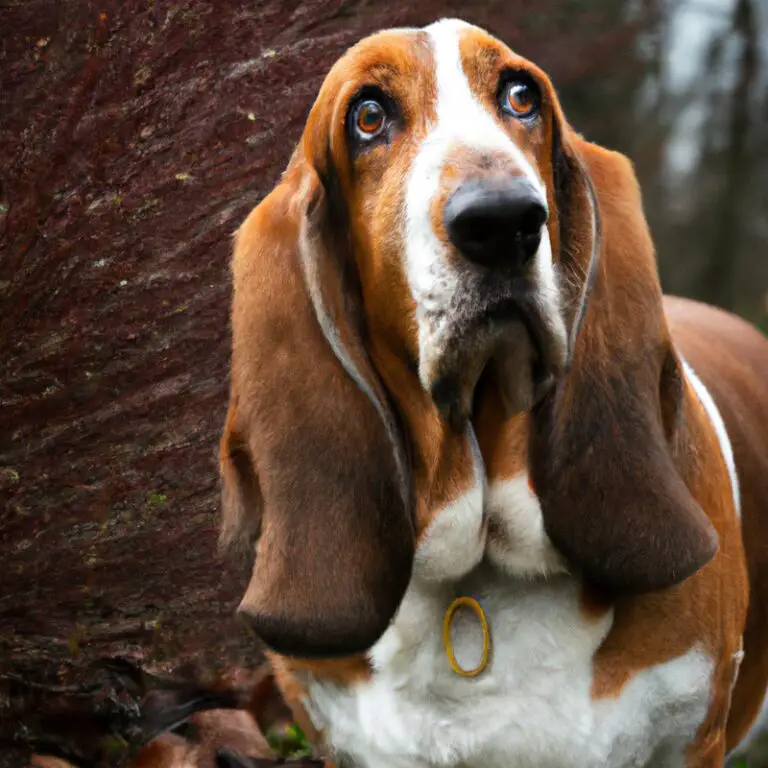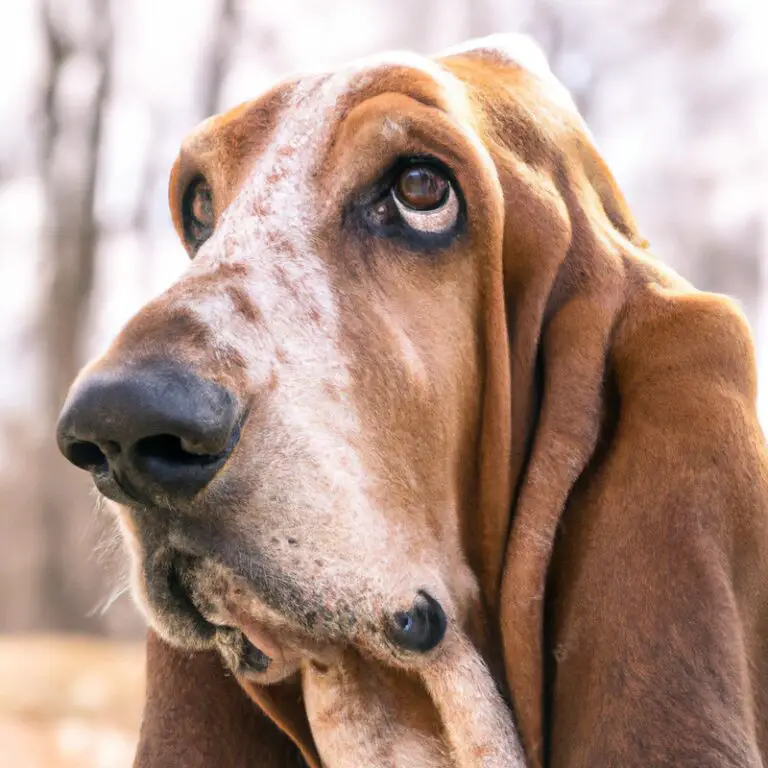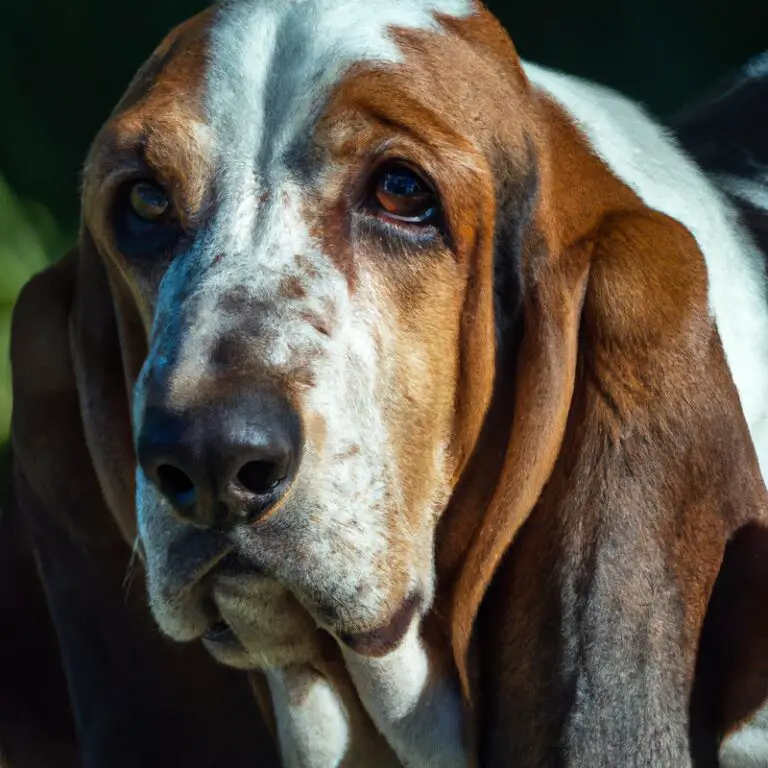Do Basset Hounds Have a Strong Prey Drive?
Key Takeaways:
- Basset Hounds generally have a moderate prey drive compared to other hunting breeds.
- Their strong sense of smell is more prominent than their prey drive.
- While they may chase after small animals, they are typically not aggressive towards them.
- Proper training and socialization can help manage their prey drive effectively.
Picture this: you’re out on a walk with your Basset Hound, enjoying the fresh air, when suddenly, they catch a glimpse of a squirrel darting up a tree.
In an instant, their nose drops to the ground, their ears perk up, and their instincts kick into high gear.
But what exactly is driving this intense focus on prey?
Are Basset Hounds known for their strong prey drive?
As an expert in canine behavior, I’m here to explore the fascinating world of prey drive in Basset Hounds.
So grab a cup of coffee, sit back, and let’s dive into this intriguing topic together.
| Breed | Prey Drive |
|---|---|
| Basset Hound | No |
Understanding Prey Drive in Dogs
What is Prey Drive?
Prey drive is an instinctive behavior in dogs that compels them to chase, capture, and potentially harm small moving objects or animals.
It is rooted in their ancestral hunting instincts and varies in intensity among different breeds and individual dogs.
Prey drive is characterized by heightened focus, excitement, and determination when engaging with prey-like stimuli.
It can be observed through behaviors such as stalking, chasing, pouncing, and biting.
Understanding a dog’s prey drive is important for managing their behavior and ensuring their safety and that of their environment.
Factors Influencing Prey Drive in Dogs
Prey drive in dogs can be influenced by several factors. Genetics play a significant role, as certain breeds have a strong instinct to chase and capture prey.
Additionally, early socialization and training can shape a dog’s prey drive.
Experiences during development, such as exposure to different stimuli and environments, can also impact prey drive. Lastly, individual temperament and personality traits can contribute to the intensity of a dog’s prey drive.
Understanding these factors is essential for owners to manage and work with their dog’s natural instincts in a safe and controlled manner.
Common Breeds with Strong Prey Drive
Some common breeds known for their strong prey drive include:
- Border Collie: These herding dogs have a strong instinct to chase and control movement, making them excellent at chasing down prey.
- Jack Russell Terrier: Originally bred for hunting small game, Jack Russells have a high energy level and a strong desire to pursue and capture prey.
- Greyhound: As one of the fastest dog breeds, Greyhounds have a natural instinct to chase and catch small animals.
- Siberian Husky: These sled dogs have a strong prey drive stemming from their history of hunting and surviving in harsh environments.
- Australian Cattle Dog: Bred to work alongside herders, this breed has a natural inclination to chase and control animals, making them excellent at managing livestock.
It’s important to note that individual dogs can vary, even within a specific breed.
Prey drive can also be influenced by training and socialization.
Assessing Prey Drive in Basset Hounds
Assessing the prey drive in Basset Hounds can be done by observing their behavior during play and walks. Look for signs of intense focus, chasing, and persistence when they spot small animals or toys.
Additionally, pay attention to their reaction to scents and their inclination to follow trails.
It’s also helpful to engage them in interactive games that simulate hunting. Remember, each Basset Hound may have varying levels of prey drive, so assessing it on an individual basis is key.
Characteristics of Basset Hounds
Overview of Basset Hound Breed
Basset Hounds are a unique breed known for their long ears, droopy eyes, and low-to-the-ground bodies. They are medium-sized dogs, typically weighing between 40-65 pounds.
With a calm and laid-back temperament, Basset Hounds are often described as friendly, patient, and affectionate companions.
They have a strong sense of smell and were initially bred for hunting small game, such as rabbits and hares. Despite their hunting background, Basset Hounds are generally gentle and make great family pets.
However, they do require regular exercise and mental stimulation to keep them happy and healthy.
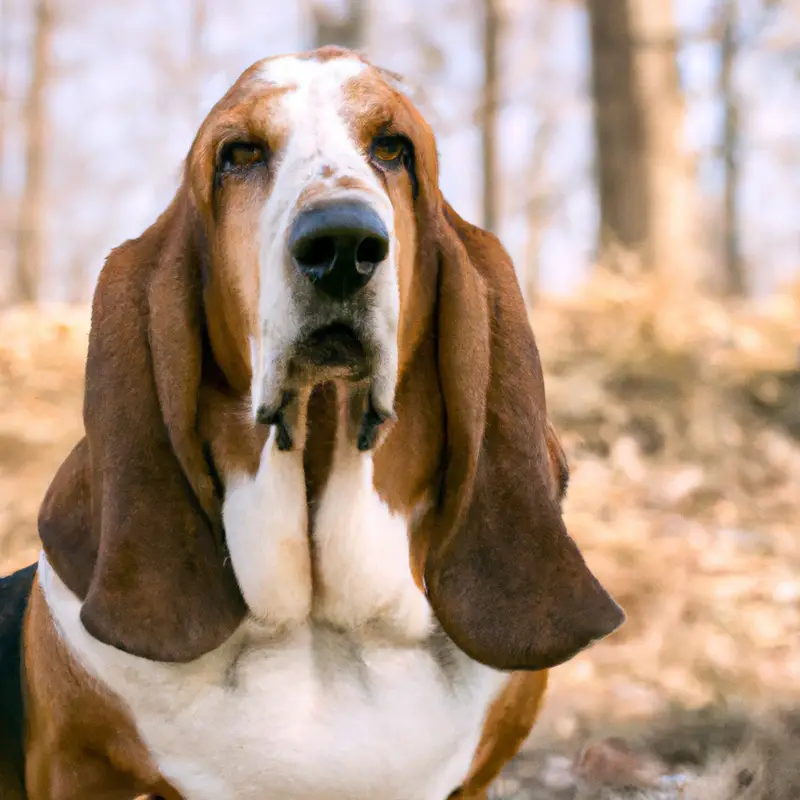
Behavioral Traits of Basset Hounds
Basset Hounds are known for their friendly and affectionate nature.
They have a calm and patient temperament, making them good family pets.
Bassets are also quite stubborn and independent, which can make training a bit challenging.
Additionally, their strong sense of smell and tracking instincts can sometimes lead them to become easily distracted.
However, with consistent training and socialization, these traits can be managed effectively.
Basset Hounds also tend to be prone to excessive drooling and snoring due to their distinctive anatomy.
Hunting Background of Basset Hounds
Basset Hounds have a strong hunting background. Originally bred in France for hunting small game, these dogs were prized for their ability to track scents and flush out prey.
Their long ears and droopy skin help to trap scents and keep them close to the ground.
Basset Hounds are known for their incredible sense of smell and determination when on a scent trail. While they may not have a high prey drive compared to some other breeds, their hunting instincts are still present and should be taken into consideration when owning one.
Prey Drive in Basset Hounds
Natural Instincts of Basset Hounds
Basset Hounds have natural instincts that are deeply rooted in their breed history.
Their strong sense of smell and tracking ability make them excellent scent hounds.
They have a strong prey drive and love to follow scents, especially when it comes to hunting small game like rabbits and squirrels.
Bassets are also known for their endurance and determination when on a scent trail.
These instincts can make them focused and single-minded when they catch a whiff of something interesting.
It’s important to understand and manage these natural instincts to ensure the well-being and safety of your Basset Hound.
Influence of Genetics on Prey Drive
The prey drive in dogs is influenced by genetics.
It is a natural instinct that is passed down through generations.
Certain breeds, such as Basset Hounds, may have a stronger prey drive due to their hunting background and selective breeding for specific traits.
However, it’s important to remember that each dog is unique and may have individual variations in their prey drive.
Understanding the influence of genetics can help us better assess and manage a Basset Hound’s prey drive.
How to Evaluate Prey Drive in Basset Hounds
To evaluate prey drive in Basset Hounds, observe their behavior during playtime or when they encounter small animals. Look for signs of excitement, determination, and interest in chasing and capturing prey.
You can also use toys or games that stimulate their hunting instincts and see how they respond.
Another useful method is to introduce them to controlled situations with small animals, such as using a fenced area or attending structured training classes. Remember to always prioritize safety and provide a controlled environment for your Basset Hound during these evaluations.
Typical Prey Drive Level in Basset Hounds
Basset Hounds generally have a moderate prey drive level.
While they do possess hunting instincts, they are not as intense as some other breeds.
These lovable hounds were originally bred for tracking scents, not chasing down prey.
However, it’s still important to provide mental and physical stimulation and engage them in activities that channel their instincts in a positive way.
Assessing an individual Basset Hound’s prey drive may vary, but as a breed, their typical prey drive level is moderate.
Managing a Basset Hound’s Prey Drive
Providing Mental and Physical Stimulation
Providing mental and physical stimulation is essential for managing a Basset Hound’s prey drive.
Regular exercise, such as daily walks or playtime in a secure area, helps to burn off excess energy.
Engaging in interactive games, puzzles, and obedience training can help stimulate their minds and keep them mentally engaged.
Providing them with appropriate toys and activities that satisfy their natural instincts, such as scent games or hide-and-seek, can also help channel their prey drive in a productive way.
Remember to vary the activities to keep them entertained and fulfilled.
Channeling Prey Drive into Productive Activities
To channel your Basset Hound’s prey drive into productive activities, there are a few strategies you can try.
First, provide them with plenty of mental and physical stimulation through puzzle toys, scent games, and interactive play.
This will help satisfy their natural instincts in a controlled and productive way.
Next, consider enrolling them in obedience training and socialization classes to help them learn impulse control and appropriate behaviors.
Additionally, engaging in activities like agility or nose work can give them a purpose for their prey drive.
Remember, consistency and patience are key when redirecting their instincts into productive outlets.
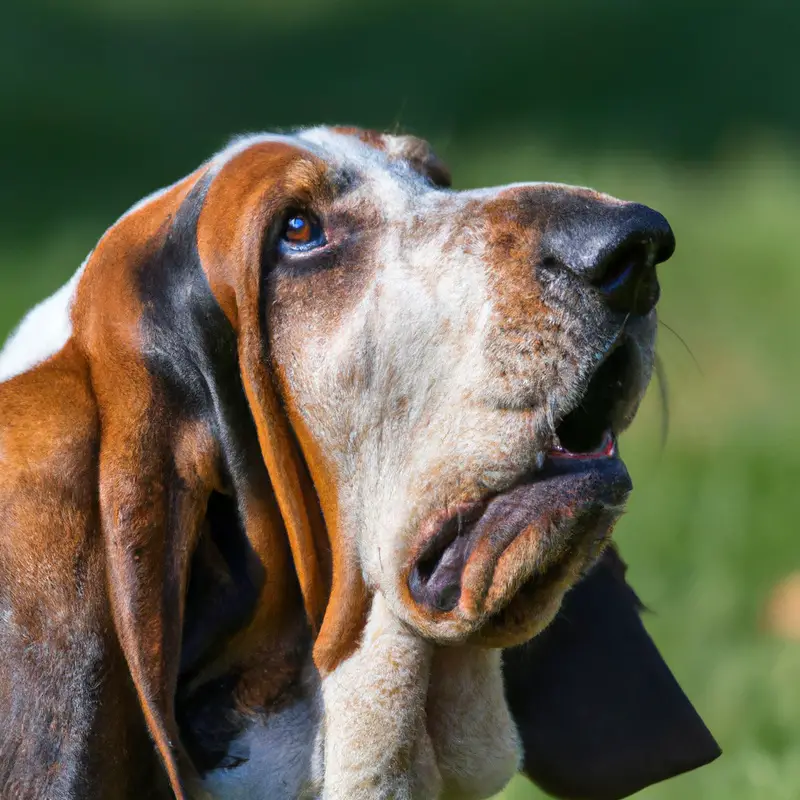
Training and Socialization for Prey Drive Management
Training and socialization are key when it comes to managing a Basset Hound’s prey drive.
- Start with basic obedience training to establish your role as the leader. Use positive reinforcement techniques to encourage desired behaviors.
- Gradually introduce your Basset Hound to different environments, people, and animals to build their confidence and reduce reactive behaviors.
- Provide mental and physical stimulation through interactive toys, puzzles, and regular exercise.
- Teach a solid recall command to ensure your Basset Hound can be safely called back when off-leash.
- Consider enrolling in obedience classes or working with a professional trainer for additional guidance and support.

Ensuring a Safe Environment for Basset Hounds
Creating a safe environment for your Basset Hound is essential to ensure their well-being. Here are some ways to promote safety:
- Secure your yard: Basset Hounds have a tendency to wander, so make sure your yard is securely fenced to prevent any potential escapes. Check for any gaps or loose areas that your dog could slip through.
- Remove hazards: Bassets are prone to sniffing and exploring, so remove any toxic plants, chemicals, or small objects that could be harmful if ingested.
- Provide supervision: When outside, always supervise your Basset Hound to prevent them from getting into dangerous situations or encountering unfamiliar animals.
- Create a cozy space: Basset Hounds enjoy having their own comfortable area where they can relax. Provide a cozy bed or crate for them to retreat to when they need some downtime.
- Use childproofing techniques: Bassets have a nose for trouble, so utilize childproofing measures throughout your home to minimize any potential risks. Secure cabinets, keep small items out of reach, and use safety gates if necessary.
By taking these precautions, you can ensure a safe and secure environment for your Basset Hound to thrive in.
Living with a Basset Hound’s Prey Drive
Supervision and Control When Outside
When your Basset Hound is outside, it’s important to supervise and have control to ensure their safety and the safety of others. Always keep an eye on them, especially in areas where they could chase after small animals.
Use a secure leash and consider using a harness for added control.
Train them to have a reliable recall so they come back to you when called. Avoid off-leash areas if your Basset Hound has a strong prey drive.
Keep them away from areas where they could interact with unfamiliar animals to prevent any potential conflicts.
Leash Training and Recall for Safety
Leash training and recall are essential for the safety of your Basset Hound. Make sure to start leash training early and use positive reinforcement techniques.
Consistency is key, so practice regularly.
When it comes to recall, use high-value treats and rewards to reinforce coming back to you. Avoid punishing your dog if they don’t come immediately, as this can hinder their progress.
Always supervise your Basset Hound when off-leash in a secure area and reinforce their recall training.
Safety should always be a top priority when it comes to managing your Basset Hound’s prey drive.
Prey Drive and Household Pets
Prey drive in Basset Hounds can pose challenges when living with other household pets.
Due to their hunting background, Basset Hounds may have a strong instinct to chase and potentially harm smaller animals such as cats, rabbits, or birds.
It’s essential to carefully introduce and supervise interactions between Basset Hounds and other pets.
Providing separate spaces and supervised playtime can help prevent any potential conflicts.
Always prioritize the safety of all pets involved and consult with a professional dog trainer for guidance on managing prey drive in a multi-pet household.
Prey Drive and Interaction with Other Animals
Basset Hounds have a moderate prey drive, meaning they may show interest in chasing small animals. It’s important to supervise and control them when outside to prevent them from chasing other animals.
Leash training and recall commands are crucial for their safety.
Proper socialization with other animals from a young age can help reduce any potential aggression. However, it’s always best to monitor interactions closely and ensure a safe environment for both your Basset Hound and other animals.
Final Verdict
Basset Hounds do possess a prey drive, but it may not be as strong as in some other breeds. This is due to their hunting background and natural instincts.
Assessing and managing a Basset Hound’s prey drive requires providing adequate mental and physical stimulation, channeling the drive into productive activities, and ensuring a safe environment.
While they may not have the same level of prey drive as other breeds, it is still important to supervise and control them outside, leash train them, and consider their interactions with other pets and animals. Overall, understanding and managing a Basset Hound’s prey drive is essential for a harmonious and safe living environment.

